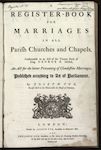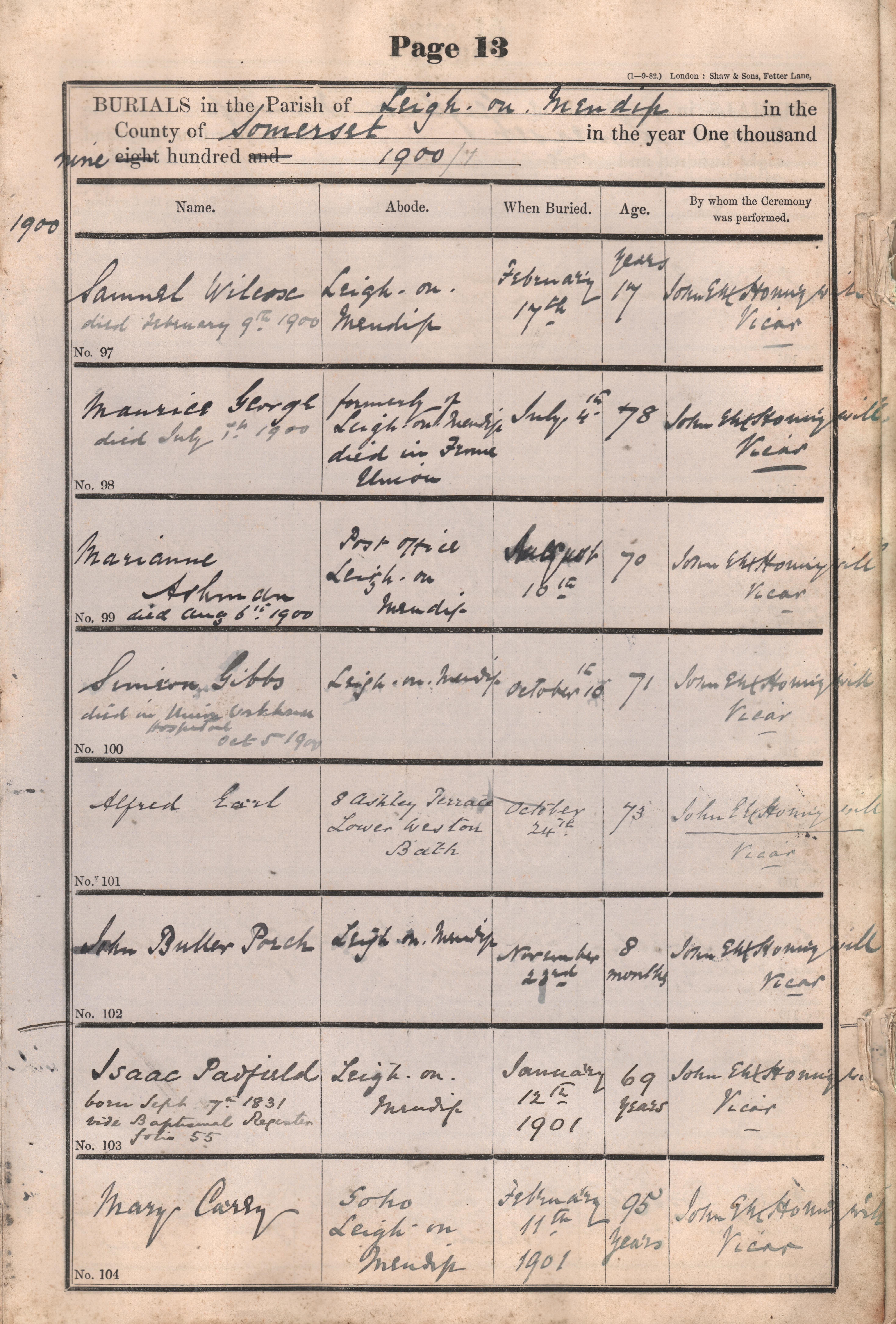Parish Records
Origins
In 1538 Thomas Cromwell in support of Henry VIII passed an order that required parishes to keep a register for the parish of baptisms, marriages and burials but there was little response until the order was repeated by Queen Elizabeth in 1558 when many more parishes kept records.
However, these early records are difficult to read, are in Latin, sometime illegible, and with minimal information provided.
In 1597 by order of the Queen, books of parchment leaves were to be kept and as a result Parish Books were introduced to hold the records and from this point onwards the parish records were better protected.
Further, in 1598 it was detailed that copies of parish entries were to be sent to the Bishop of the Diocese; these later became known as the Bishop’s Transcripts and provide a useful record when other local records were lost.
Transcription
The early records from Leigh on Mendip from 1566 have all been transcribed into Microsoft Excel by a number of expert transcribers who have experience of working with the microfiche copies of the relevant parish books.
Later records (from 1888 for burials, later for baptisms and marriages) were transcribed from the actual books held at the time by the parish and double checked for accuracy.
In addition, we are very fortunate that scans have been made of all the historical Leigh on Mendip records that have been deposited in the Somerset Heritage Centre, Taunton and held by the South West Heritage Trust and Ancestry (www.ancestry.com) and made available for use in this project.
We are in the process of linking the 3000+ scans of the parish records available to this search facility by building them into the database. We are doing this because we know that families undertaking genealogy research like to have the opportunity to look at the original records.
You can read about the process of gaining permission to use the transcribed parish records in the searchable archive and we will shortly add some information about how the process itself was carried out.
Please note that the actual searchable archive is only available (on a free basis) in the community room (Tower room) in St Giles church. For further details please email the Leigh on Mendip Heritage Group via info@lomhg.org.uk.
Parish Books - Churchyard
Parish Books were often known Book 1, Book 2, Book 3 etc. In Leigh on Mendip the curate copied a number of early records into the Books 1 and 2, which preserved the early records, but with an element of duplication, making understanding the records quite difficult.
For Leigh on Mendip the records recorded in the Books cover from 1566 for burials, 1568 for marriages and 1575 for baptisms, although all the books have some lost data records in these early years.
So, some early records for Leigh on Mendip were recorded in Book 1 and some also copied into Book 2 but some were not; generally, the copying covered the 59 years from 1670 to 1729.
Research into take up generally has suggested that just 7.2% of parishes kept records in 1538; 14.8% in 1555, rising to 54% in 1600, so it is evident how fortunate Leigh on Mendip is to have parish records dating back to 1566.
Civil Cemetery(1) Records
The Civil Cemetery(1) is located on a parcel of land adjacent to the Parish Churchyard and is accessed from the north-western part of the ’East Walled Churchyard’ area. The Civil Cemetery is managed by the Parish Council and contains burials and cremations that post-date the closure of the Parish Churchyard, with exceptions for a number of interments, where there is the opportunity to utilise existing capacity in the churchyard family plots. A further parcel of land, which will provide Civil Cemetery(2) has been acquired by the Parish Council to the west of the Drang footpath, which runs between St Giles church and the Memorial Hall, for later interments, when there is no available capacity in the current Civil Cemetery.
Leigh Heritage Group started adding information for the Civil Cemetery(1) in October 2021.
Examples
Examples given here show the high quality of more recent Parish records. However, some of the earlier records have the issue of legibility and different types of records (e.g. baptism and marriage) are recorded on the same page, making reading more difficult.
Click on an image to see a larger version.

